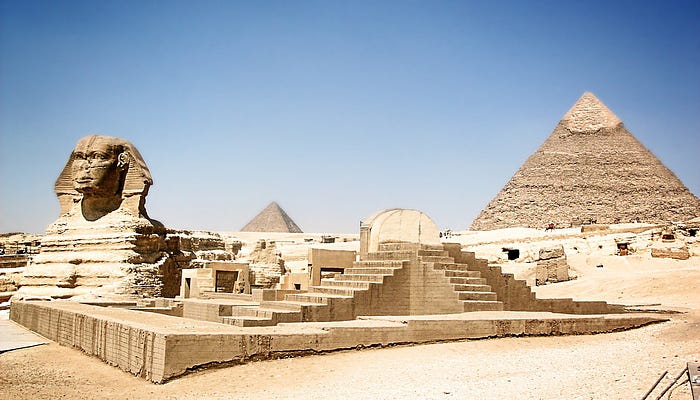
The Great Pyramid of Khufu at Giza. Seeking to understand how this remarkable monument was constructed has long been a source of scholarly fascination. Here we see the west side of the pyramid, with the Western Cemetery, which contained officials and retainers, visible in the foreground. PHOTO: © Mark Lehner.
We know it as the Great Pyramid. To the Ancient Egyptians it was the Akhet Khufu or Horizon of Khufu, named after the 4th Dynasty king who reigned from roughly 2633 BC to 2605 BC. By any measure, the pyramid that served as his tomb was a staggering accomplishment. Its four sides were each approximately 230m long, while the edifice incorporated some 2.3 million blocks and originally stood almost 150m high. Within lay an intricate network of chambers and passages, which showcase the skill of Egyptian masons.
Despite the monument’s impressive statistics, though, there is one thing it is notably short of: text. Unlike some later pyramids, and the famous tombs crowding the Valley of the Kings, the interior of the Great Pyramid is not lavishly adorned with hieroglyphics. Instead, just a few graffiti naming work gangs were daubed in suitably discreet spots. Until recently, these sparse words provided the only contemporary textual glimpse of construction operations.
A decade ago, hoping to secure an eye-witness account of work on the Great Pyramid would have seemed like archaeological wishful thinking of the highest order. But then, in 2013, fragments of the earliest papyri documents ever found were recovered by an archaeological team led by Pierre Tallet, Professor of Egyptology at the University of Paris-Sorbonne.
It speaks volumes about the scale of Khufu’s grand design that these texts, which were compiled by individuals involved with construction operations, were not found within the pyramid or even at Giza. Instead, they were recovered more than 130km away, in Egypt’s Eastern Desert near the Red Sea shore. The papyri comprise logbooks and other bureaucratic records that detail the activities of teams engaged on Khufu’s mortuary complex.
Some of these accounts overlap in a remarkable fashion with the results of archaeological work led by Mark Lehner, President of AERA (Ancient Egypt Research Associates), at Giza. Now these two archaeologists have collaborated on a book shedding new light on one of the most renowned archaeological monuments in the world (see ‘Further reading’). TO READ THE ENTIRE ARTICLE, CLICK HERE...







 Picture from
Picture from 
